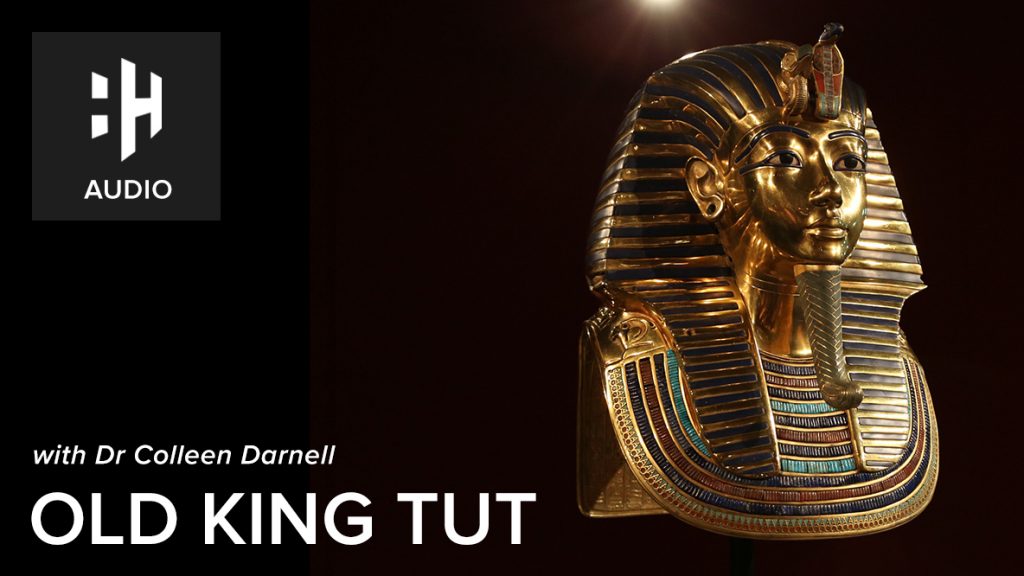

In one of the most famous tales of archaeological history, on 4 November 1922 British Egyptologist Howard Carter discovered the entrance to the tomb of the Egyptian Pharaoh Tutankhamen.
The quest for the tomb of the Boy King
It was Napoleon’s Egyptian campaign of 1798 that ignited a European interest in ancient Egypt and its mysteries. When his troops faced an army of Mamelukes under the shadow of the pyramids, he famously called out to them; “from the heights of these pyramids, forty centuries look down on us.”
 Listen Now
Listen NowIn 1882, the British seized the country from Napoleon’s grip and the craze for Egyptology intensified. The discovery of a well-preserved royal tomb became an obsession. Ancient Pharaohs were famous for their lavish tombs. Inevitably tales of vast wealth drew grave robbers, who emptied many tombs of their treasure and even their corpses. By the 20th century, only a handful of tombs remained undiscovered, and presumably intact, including that of the little known Tutankhamen.
A boy king, reigning during a troubled time for the 18th Dynasty, Tutankhamen had died aged just 19. During the early years of the 20th century, American businessman and Egyptologist Theodore Davis discovered some ancient clues hinting at the existence of an undiscovered tomb for the young Pharaoh. They received little attention until his former colleague Howard Carter decided Davis might be on to something.
On examining the clues, Carter decided that Tutankhamen would be found in the famous Valley of the Kings. The Egyptologist was confident enough to approach his old friend Lord Carnarvon in order to procure funds for the dig. Carnarvon, who fancied himself an expert, cast his eyes over Carter’s plans and gave him permission to start digging in 1914. The First World War delayed Carter’s plans, and after several years of post-war excavations, Carnarvon was ready to pull funding from the expedition: nothing had been found.
Carter pleaded with his friend and patron for one more set of excavations before he gave up, and so in late 1922, Carter began his last excavation in the Valley of the Kings.

Howard Carter and Lord Carnarvon outside Tutankhamun’s Tomb. Image credit: Public Domain.
The ‘magnificent discovery’
Carter started his excavations next to the already-discovered tomb of Pharoah Ramesses. He met with little success until his local labourers were instructed to clear an old workman’s hut which was getting in the way. As they did so, an ancient step emerged from the sand.
Carter excitedly ordered the step cleared. As the sand was removed, a doorway was gradually revealed. To his astonishment, the entrance still bore the Anubis symbol of the Royal Necropolis, indicating that this tomb was previously untouched.
A telegram was rushed to Carnarvon telling him of the “magnificent discovery.” Carnarvon and his daughter, Lady Evelyn Herbert, arrived in Alexandria on 23 November, and the next day Carter began preliminary work to open the tomb.
 Watch Now
Watch NowMaking a small hole in the door, there was enough light to see that there was still gold inside. When asked what he could see, Carter replied with the famous words: “yes, wonderful things.” The tomb wasn’t actually opened until the following day, in the presence of officials from the Egyptian Department of Antiquities: some claim that Carnarvon, Evelyn and Carter made a secret, illegal visit that night.
When they finally did gain entrance, they discovered a room full of treasures and insights into the life of a young man who had lived in an indescribably different world. They found chariots, statues, and most famously the young king’s exquisite death mask. Grave-robbers had left marks but had left almost everything intact, making it one of the most remarkable finds of 20th century Egyptology.

Photos of Howard Carter and A. C. Mace excavating Tutankhamun’s tomb. Image credit: Public Domain.
Was the tomb cursed?
In the years that followed, the tomb was fully excavated, its contents analysed and shown to admiring crowds across the world. The body of Tutankhamen himself was subject to rigorous tests. It became clear that he had suffered numerous genetic disorders due to his parents being closely related, and that this – combined with malaria – had contributed to his premature death.
Tutankhamen’s tomb remains one of the most famous archaeological discoveries of all time.
One of the legends that has arisen following the tomb’s discovery is that it was cursed. Many of those involved in its excavation befell strange and unlucky fates: 8 of the 58 involved died within the next dozen years, including Lord Carnarvon himself, who succumbed to blood poisoning just six months later.
Some scientists have speculated the room may have contained radiation or poison: there is no evidence to substantiate this, and many believe the idea of a ‘curse’ was invented by newspapers of the day in order to sensationalise events. Other tombs did have ‘curses’ inscribed on their entrances, presumably in the hope of deterring grave robbers.
 Watch Now
Watch Now












